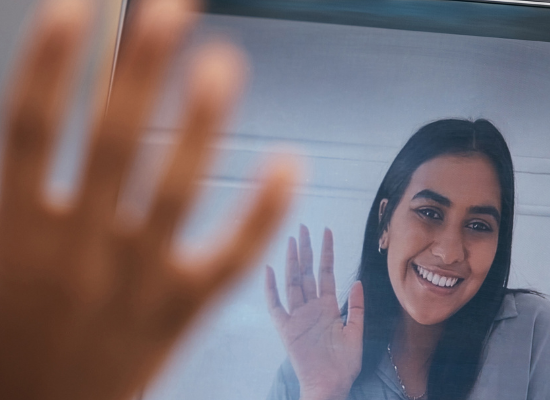
Stephanie Hepburn is a writer in New Orleans. She is the editor in chief of #CrisisTalk. You can reach her at .
The Substance Abuse and Mental Health Services Administration recently released National Guidelines for Child and Youth Behavioral Health Crisis Care, providing best practices and guidance for designing and implementing services that meet the needs of youth and their families. “Systems must be tailored to children — developmentally and socially — and engage families,” says Dr. Billina Shaw, senior medical advisor within the Center for Mental Health Services at SAMHSA. “When youth have a behavioral health crisis, the response they receive can potentially change the trajectory of their entire life.”
In the United States, young people are experiencing a mental health crisis. In 2021, the American Academy of Pediatrics, American Academy of Child and Adolescent Psychiatry and Children’s Hospital Association declared a national emergency in child and adolescent mental health. That same year, Dr. Vivek Murthy, surgeon general of the United States, issued an advisory on protecting youth mental health. (He also recently issued an advisory on social media and youth mental health.)
In the guideline’s companion, A Safe Place to Be: Crisis Stabilization Services and Other Supports for Children and Youth, Melissa A. Schober and her co-authors write that adult crisis response systems can’t be retrofitted to serve youth and their families. Dr. Shaw points out that young people and their needs are also not uniform. “There’s a distinction among children, younger adolescents and those transitioning into adulthood,” she says.
Home and school are where many young people experience stressors and support. “Those are the major domains of their life,” notes Dr. Shaw, “so when we remove them from those settings to try to ‘fix’ them, we neglect the context in which the crisis occurred.” While the guidelines state and support the fact that some youth may require separation from these environments for stabilization, most benefit from a more naturalistic community-based stabilization for navigating their social stressors. “Otherwise, we are just putting ourselves on a hamster wheel with families and not helping them solve the stressors, triggers and problems at home that might be putting the youth in crisis in the first place,” added Dr. Shaw.
When services, like inpatient care and crisis stabilization, remove a child or adolescent from their home, they might help to eliminate or minimize stressors. Unfortunately, they’re also taking the young person out of the structure and support system of loved ones that could help them thrive. “Being with their family is how they know there’s a continuity to the world,” she says. “I think about when I was in child psychiatry inpatient rotations over Christmastime, and I’d see little kids, I was heartbroken because the naturalistic place for them is with family,” she says. “To be away from family at that time hits very differently when you’re a child.”
Experiencing the emergency department and inpatient hospitalization as a child or adolescent can be scary and traumatizing. “That can deter the young person from seeking help in the future,” says Dr. Shaw. Also, marginalized youth face increased wait times and risk of restraint. According to a study published in JAMA Pediatrics, emergency room staff are more likely to restrain Black children than white children. Also, Black children, young adolescents, youth with intellectual and/or developmental disability and youth experiencing suicidal thoughts experience a greater risk of psychiatric boarding. The risk of psychiatric boarding also increases during a holiday.
Dr. Shaw believes that the shift from normalcy is why young people have struggled much more than adults during the Covid public health emergency. “The crisis for kids was brewing well before then, but the uncertainty of the pandemic has been profoundly challenging for them,” she says. “They don’t have the same knowledge of the world to lean back on — that a disaster can strike, and it will still eventually be OK.” Children and adolescents were developing their sense of normalcy and understanding of the world amid a pandemic. “That impacts them differently.”
Keeping kids and teens at home and in the classroom means families and school leaders must have access to services within the community, like mobile crisis and in-home crisis stabilization. Otherwise, the default mental health responder and provider are often law enforcement and the emergency room, respectively. Often, young people don’t need to be in the emergency room. Not only is it high cost, financially and potentially emotionally, but pushing children and adolescents into an emergency setting can be detrimental.
Dr. Shaw highlights that communities must have mobile crisis services tailored to young people and schools need to have access to them. “They need to know these services exist and can respond to them,” she says. Requesting mobile crisis, rather than law enforcement, allows young people to be evaluated by mental health professionals and connect with services. It also decriminalizes mental health and fosters a learning opportunity for schools to better understand mental health challenges and help their students.
Engaging mobile crisis can stabilize, assess and support most young people without removing them from school, says Dr. Shaw, allowing schools to be a safe and healing place for students. “What we know is that all children and adolescents require a safe place to be — that’s a critical element of the guidelines,” she says.
Another vital component for youth mental health is peers, even more so than for adults. The power of peers is magnified for children and adolescents because a peer is someone who has “walked in their shoes” and because the peer is of a relatable age. “Developmentally, it’s appropriate for young people to start to shun adults,” she says. “That’s normal and that rejection can include care providers — those providing care might look a lot like parents to them.”
As the medical director of the Behavioral Health Division of the Prince George’s County Health Department in Maryland, Dr. Shaw helped develop and implement a special transitional-age youth mobile crisis response with a SAMHSA Children’s Mental Health Initiative grant. The two-person teams comprised a clinician and a relatable age peer (often in their early 20s). As the program developed, it quickly became apparent that outcomes were best when the clinician took a step back and allowed the peer to take the lead. “After the youth bonded and connected with the peer, they were more open to the clinician’s questions,” she says.
Dr. Shaw believes youth peers should be woven throughout crisis stabilization programs and in advisory board positions that allow them to advocate for young people. For example, the Youth Homelessness Demonstration Project in Prince George’s County, an initiative to support the needs of youth experiencing homelessness, successfully lobbied for legislation lowering the age of consent for mental health treatment in Maryland. Today, minors in the state can consent to mental health treatment at 12.
The experience empowered youth who participated in the advocacy, aligning well with trauma-informed principles. It also was developmentally appropriate. “Young people are finding their way in the world, figuring out who they want to be,” says Dr. Shaw. “They want to have an authentic voice and make a difference.”
Participating as a youth peer can also positively affect a person’s growth and development. Years ago, when Dr. Shaw and her team worked on promotional mental health videos, a youth peer said, “I am hope personified.” “That still resonates with me,” she says. “Having a peer help them navigate the waters of life is so important for many young people.”









